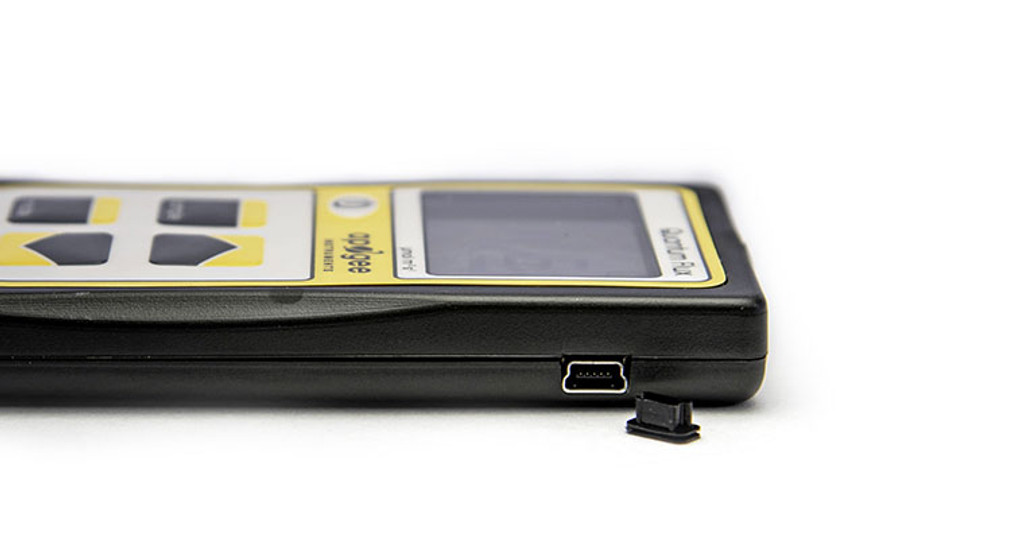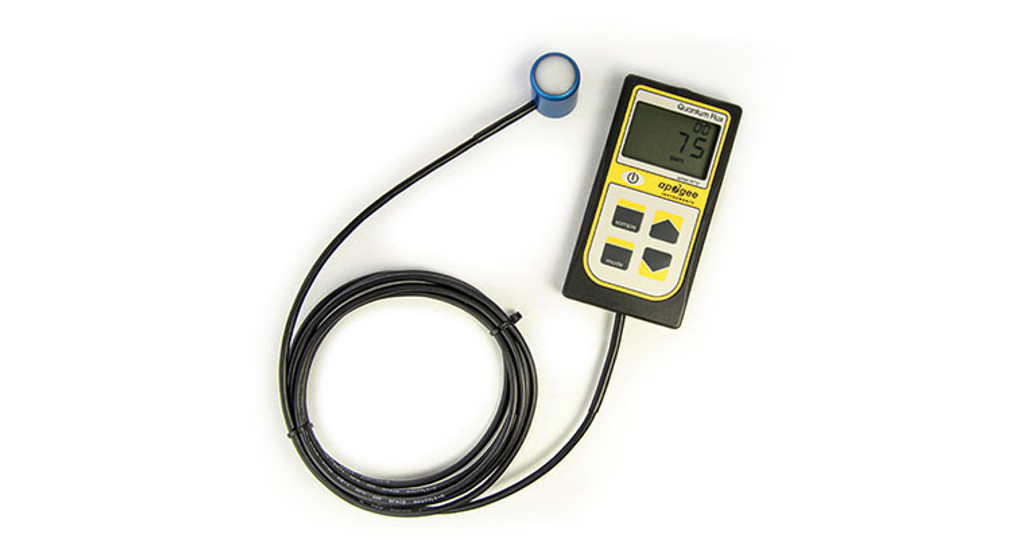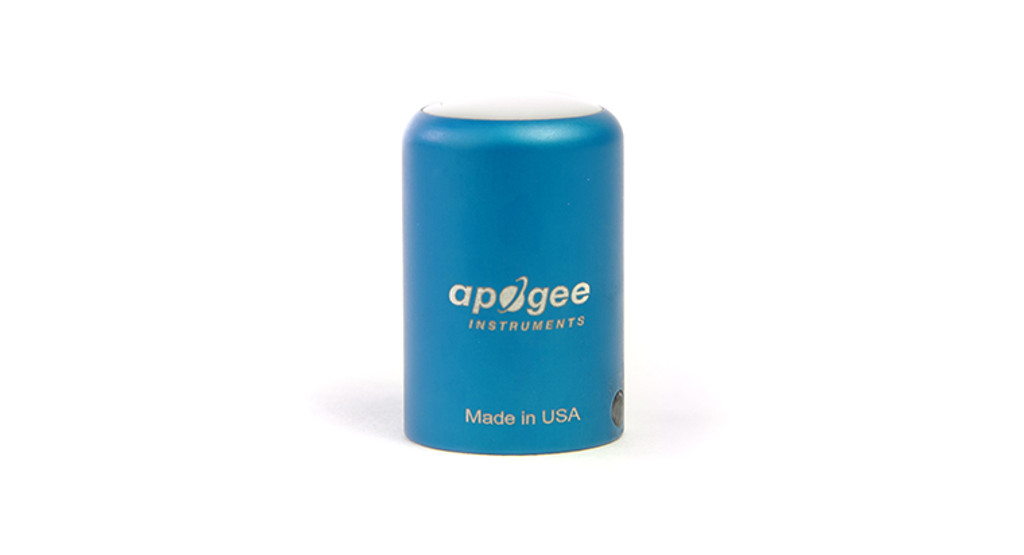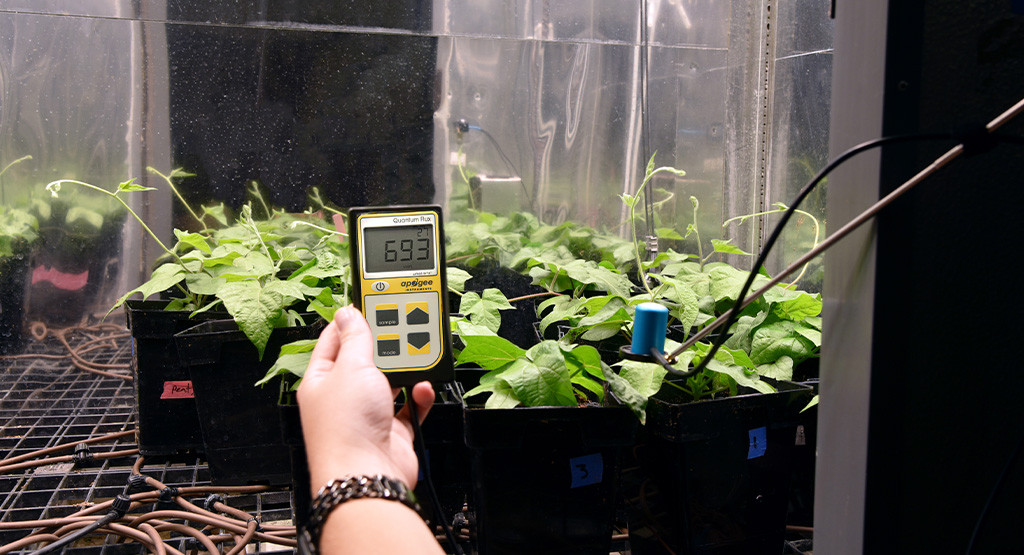Updated:2025-03-13
Views:1480
 WeChat
WeChat
 QQ
QQ
 Online Service
Online Service
 User's Manual
User's Manual
MQ-500 full spectrum quantum meter is used to accurately measure photosynthetic effective radiation (PAR) of all light sources. An accurate quantum photometer is essential for measuring the light intensity used for the precise growth of plants and other photosynthetic organisms in greenhouses, growth chambers, farms, gardens, aquariums and other agricultural systems.




Quantum Photometer:Unlike the commonly used LUX or foot candle meter for measuring human visual light, our instrument has a laboratory grade PPFD (Photosynthetic Photon Flux Density) or "quantum" optical detector that is precisely calibrated to measure ˉ² s ˉ¹ Is the specific color wavelength of light intensity emitted by LED, HPS, MH, sunlight and other light sources used by plants for photosynthesis.
Rugged and easy to use:Quantum sensors use precision silicon photodiode detectors, custom filters, and acrylic diffusers, all mounted in self-cleaning, dome shaped, anodized aluminum sensor heads. The sensor head is encapsulated with epoxy resin and can be used for many years in harsh environments, including underwater. The hand-held instrument is connected by cable and can display real-time readings, record samples, and record average intensity and daylight integration (DLI) measurements. Unlike the sensor head, the hand-held instrument is not waterproof.
Extremely accurate and stable:Accurately measure and combine the intensity of all photons between 400 and 700 nm to giveµ mol m ˉ² s ˉ¹is a single PAR reading in units. It has stable and accurate calibration, and the annual precision drift rate is less than 2%.
Three measurement modes:the instrument has point measurement, sampling and logging modes, and will record inmol m ˉ² s ˉ¹is the unit of comprehensive daily total. The sampling mode will record up to 99 manual measurements, and the logging mode will turn the instrument on and off, making measurements every 30 seconds. Every 30 minutes, the instrument will take an average of 60 30 second measurements and record the average value in the memory, up to 99 average values. Once filled, it will overwrite the old measurement with the new one. The daily light integration will be recorded from 48 average measurements to obtain a daily reading, which can be downloaded via the Apogee AC-100 cable.

| Calibration Uncertainty | ± 5 % |
| Measurement Range | 0 to 4000 µmol mˉ² sˉ¹ |
| Measurement Repeatability | Less than 0.5 % |
| Long-term Drift (Non-stability) | Less than 2 % per year |
| Non-linearity | Less than 1 % (up to 4000 µmol mˉ² sˉ¹) |
| Response Time | Less than 1 ms |
| Field of View | 180˚ |
| Spectral Range | 389 to 692 nm ± 5 nm (wavelengths where response is greater than 50 % of maximum) |
| Spectral Selectivity | Less than 10 % from 412 to 682 nm ± 5 nm |
| Directional (Cosine) Response | ± 5 % at 75 ˚ zenith angle |
| Azimuth Error | Less than 0.5 % |
| Tilt Error | Less than 0.5 % |
| Temperature Response | -0.11 ± 0.03 % Cˉ¹ |
| Uncertainty in Daily Total | Less than 5 % |
| Detector | Enhanced silicon photodiode |
| Housing | Anodized aluminum body with acrylic diffuser |
| IP Rating | IP68 |
| Operating Environment | 0 to 50 ℃, less than 90 % non-condensing relative humidity up to 30 C, less than 70 % non-condensing relative humidity from 30 to 50 ℃, separate sensors can be submerged in water up to depth of 30 m |
| Meter Dimensions | 126 mm length, 70 mm width, 24 mm height |
| Sensor Dimensions | 24 mm diameter, 37 mm height |
| Mass | 100 g (with 5 m of lead wire) |
| Cable | 2 m of two conductor, shielded, twisted-pair wire; additional cable available; TPR jacket |
| Warranty | 4 years against defects in materials and workmanship |
| Manufactured | Made in the USA |
Customer Service QQ
Customer Hotline:
Technical Supports